Home » Construction Services (Page 8)
Category Archives: Construction Services
The Dangers Associated With Electrical Repair
Electrical Repair and Maintenance is a growing industry. There are many ways to repair electrical wiring and connections. You will need to know some tools and safety precautions when handling these tools. Here is an overview of some of the most common electrician tools.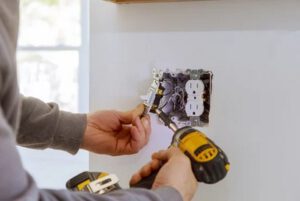
An all-in-one tool for all electrical repairs and maintenance is an Electrician’s Bench. This bench consists of a head and a foot that is designed to hold light switches, outlet trays and switches. The head has a long metal pole with several bendable wires that are the electrical services. The bench top is easy to clean; it is designed with two removable legs and a bench-top veneer. It can hold up to three light switch assemblies.
Another useful tool for electrical repairs is an Electrician’s wrench. It is similar to a socket wrench but instead of the wrenches having a bolt handle and a socket, they have a locking mechanism to secure the nut or screw. It has one or more adjustable wrenches with metal handles. This wrench is commonly used in and around plumbing. Electricians often use this tool for installing wires and water lines.
Another handy tool is a Circuit breaker panel. The panel is designed to protect against electricity overloads. It contains a circuit breaker, an input and output reset switch, a load protector and an automatic break off function. These breakers must be properly installed by trained electrical engineers.
The third most important electrical repair tool is an outlet interrupter. It prevents damage to electrical wiring by interrupting a circuit when there is a fault. It works by placing a dome on the open side of an electric connection, thus preventing the flow of current when a fault occurs. This dome stops the connection from further damage, allowing the connection to be used again.
One more useful electrical repair tool is a mister. A mister is used mainly in small electrical appliances that are difficult to access. For example, in a toaster, there is a special kind of mister that can safely loosen bolts without causing damage. Electrical mister sizes depend on the size and weight of the electrical equipment. They can either be static, which protects against electrical shock, or arc, which produces a discharge when it comes into contact with any surface. Some misters have a chemical insulation to prevent electrical shock when coming into contact with metal.
To make any electrical repair, you will need some equipment such as pliers, wire strippers, an electrician’s tape, soldering iron and an electronic multimeter. You will also need some tools such as a wrench, awl, pipe bender and drill. In some cases, you may need additional tools depending on the type of repair you want to carry out. For example, an electrician’s tape is helpful to repair electrical appliances. It is mostly used to repair broken or damaged wires.
It is a good idea to carry out small electrical repairs yourself, as you can do it in your spare time. However, if you carry out larger jobs for electrical systems, you should consider hiring a professional electrician. While you can learn basic plumbing and electrician skills from books and online tutorials, you will need to have more advanced skills in order to fix electrical systems. You can also take courses from electrical schools, or attend electrical related workshops.
The best way to find a reliable service provider is to ask your friends, relatives, colleagues and neighbors for recommendations. If none of these people can provide you with reliable service providers, you can try contacting a local electrical repair company. Most reputable electrical repair companies have their own websites which provide details about their services. You can easily find out whether the company you are contacting is a reputable one by checking their references and testimonials.
When it comes to electrical repairs, it is important to hire only a professional electrician. There are many persons who mistakenly believe that they can perform the repairs at home. Unfortunately, many persons do not have the knowledge and experience to identify the risks involved. Therefore, in order to avoid problems in the future, you should always make sure that the person who will be performing the repair is fully qualified and licensed. You should also ensure that the service provider you are considering has safety standards.
An example of a service provider that has poor safety standards is the person who performs sub panel voltage changes. While inexperienced persons may accidentally short the main panel or the sub panel’s wires, a professional electrician is qualified to handle this situation. After the sub panel’s wires are shorted, the main panel can experience damage as a result of excessive heat. You can prevent this by having a licensed electrician perform the sub panel voltage changes.
Digital Builder Ep. 19: 3 Takeaways on Augmented Reality (AR) and Virtual Reality (VR) in Construction

Augmented reality (AR) and virtual reality (VR) aren’t just buzzwords, and these tools are no longer reserved for construction technologists like BIM and VDC managers. These technologies have come a long way in just a few short years and these days, they have practical use cases that owners and builders alike can benefit from at every stage of the project lifecycle.
Angel Say, CEO and Co-Founder of Resolve, and Dr. Mani Golparvar-Fard, CTO and Co-Founder of Reconstruct Inc., join the podcast to explain what’s possible with AR and VR in construction. They also bust some myths and share practical tips on implementing AR and VR.
Specifically, we covered:
- How AR and VR have evolved over the last few years
- Where these tools fit in the project lifecycle
- Getting started with AR and VR yourself
- Potential advances in the technology we may see in the near future
“It’s actually some of the less technical end users who stand to benefit the most from VR and AR.” —Angel Say
New Episodes Every Two Weeks
Digital Builder is hosted by me, Eric Thomas. Remember, new episodes of Digital Builder go live every two weeks. You can hear more episodes like this one by subscribing to Digital Builder on Apple Podcasts, Spotify, Stitcher, Google Podcasts, or wherever you listen to podcasts.
You can also subscribe to our email list with the form below so you’re the first to hear when new episodes are released:
Thank you. We’ll email you the link to the podcast once it’s live.
The difference between AR and VR
Before diving into the episodes’ key takeaways, it’s worth exploring how Angel and Mani view AR and VR, particularly when used in construction.
“When I think about these two technologies and what they represent, it really boils down to bits and atoms. Bits meaning those ones and zeros in computers, and then atoms being the building blocks of the physical world,” says Angel.
According to him, virtual reality (VR) is “all about full immersion.” You wear a device on your head, which then uses sensors and a computer to hijack your senses and make you believe you’re somewhere else. “It gives you these superpowers,” adds Angel. “I could put on a headset and teleport from my home office to an unbuilt building.”
On the other hand, augmented reality (AR) is all about “augmenting the world around you, meaning you’re taking bits and you’re overlaying them on the atoms in front of you,” says Angel.
“And so that could be metadata about pipes that you’re looking at or it could be, ‘Hey, I want to bring a piece of equipment into my home office so that when I get to the site I know what I’m dealing with.’”
Mani weighs in, saying that AR in particular has evolved quite a bit over the past five years.
“In the earlier days, it was all about augmenting someone’s view live. But for all kinds of practical reasons, we realized that you can also augment any form of reality capture data. If you have access to a static image from a cell phone device or if you have access to videos that are being provided from job sites and you’re augmenting that with planning information, that’s a form factor of AR.”
3 Takeaways on Augmented Reality (AR) and Virtual Reality (VR) in Construction
After discussing the fundamentals of AR and VR, Angel and Mani shared their thoughts on the myths surrounding the two technologies, as well as how they can be applied in construction. They also discussed the steps an organization can take to implement AR and VR.
Here are the key takeaways from the conversation.
1. AR and VR are more affordable and accessible than you think
Angel and Mani had a lot to say when asked about the common myths and misconceptions about augmented and virtual reality.
For starters, they dispelled the Hollywood depiction of AR, which usually involves people swiping virtual elements in the air.
“There’s a misconception that you would be able to visualize all kinds of information at the right point in time,” shares Mani. But this isn’t the case, as AR involves processing a lot of details, hosting information on the device, and filtering data.
Angel adds, “People always talk about Minority Report as the quintessential example of augmented reality. It’s like swiping through things in the air. We’re quite a ways away from that. It looks a little different today.”
There’s also the view that AR and VR are tools that would only benefit folks working in virtual design and construction. However, this is far from the truth.
“One common misconception that’s more industry-specific is that VR and AR are going to help BIM and VDC teams the most, and I think it’s quite the opposite. Because BIM and VDC teams spend so much time in 3D tools like Revit or Navisworks, they’re pretty good at what they do. They’re really good with 3D controls, and it’s actually some of the less technical end users who stand to benefit the most from VR and AR,” remarks Angel.
Another myth worth busting? AR and VR are expensive. That may have been the case several years ago, but these technologies have become more accessible and far less expensive over time.
As Angel points out, “Now you have VR headsets that are under $500, which is the cost of a tablet. Anybody can unbox it and jump into a virtual environment on their own with minimal help. And that starts to really democratize the use of the technology.”
2. Why AR and VR are a big deal in construction
AR and VR have practical applications that would benefit every stage of a project, from preconstruction all the way to handover and even building operations.
“All of these technologies — AR, VR, AI — are really augmenting people’s workflows. This is especially true in construction because the industry has already moved towards having so much rich data in BIM, which they’re using to coordinate and produce drawings. It’s so much rich data that we can feed into these technologies to help people be more productive,” explains Angel.
On the owner’s side, a key benefit of using AR and VR is they help mitigate the loss of information when a project is being brought to life.
AR and VR “provide the opportunity for the owner to see the end product with a level of detail that matters to them,” explains Mani.
He states, “if we can provide the owner with an opportunity to verify the work by contrasting the scope of the work that was promised from that VR model versus the reality that they’re looking at, we have yet another opportunity to make sure owners are benefiting from it.”
These technologies can also play an important role in helping owners maintain and operate their buildings.
According to Angel, “We hear from a lot of owners that BIM assets end up on hard drives and they don’t get touched until maybe you need to hand them off to a new engineer contractor working on a retrofit. But there’s so much value that you can be tapping into [with AR and VR] even after construction.”
Angel adds that most of the teams running buildings and facilities won’t get a lot of value from BIM assets since these folks don’t specialize in Revit and Navisworks. This is where VR comes into play, as it allows users to view the information in a way that they can understand and engage with.
“With VR, you put on a headset and you can walk through a BIM file. Operators can then start to leverage that asset for procedure simulations, onboarding of the employees — and in the world of remote work — making sure people know what a site looks like before they visit. And so you really start to multiply the ROI of BIM beyond the construction lifecycle,” says Angel.
3. How to getting started with AR and VR
Mani and Angel offered some of their top advice from organizations that want to get started with AR and VR. If you’re looking to implement these technologies in your projects, keep the following steps in mind.
1 – Determine the exact problem you’re trying to solve
Before investing in AR and VR, make sure you know your objectives and understand your end users. By getting clear on what you want to achieve, you’ll be able to figure out the role of technologies in your projects.
2 – Assess whether you have the right type of data to tackle the problem you’re trying to solve
In order for AR and VR to work, your data needs to be able to support these technologies.
That’s why Mani recommends conducting a self-assessment “in terms of how mature your data is” to be able to support AR and VR capabilities. “Depending on what problem you want to solve, you need to make sure your files are at a certain rate of maturity per model discipline, which is really hard to see even these days,” he adds.
3 – Set your KPIs
You need to measure the success of your AR and VR initiatives, so think about the KPIs you need to hit.
Aside from metrics that tell you whether a project is completed on time and within budget, Mani says you also need to design KPIs that measure the impact that AR and VR have on the personas using the technologies.
“Make sure you understand how many personas are being touched by that product and data,” he says.
4 – Acquire the right technology
The next step is to get the devices needed to power AR and VR.
Virtual reality, in particular, requires an investment in headsets, and Angel recommends providing a headset to every stakeholder who needs it, instead of having everyone share just one or two devices.
“It’s a lot more empowering if you can buy a headset and assign it to someone even if it’s just for the length of the project. That way, when they have 20 or 30 minutes to review the model, they can jump in and do it as opposed to having to go and check it out from the IT or the BIM or VDC team,” says Angel.
In addition to headsets, you should also ensure that you have tools that will enable you to leverage your BIM assets and other project data. A common data environment (CDE) like BIM 360 or Autodesk Build can make this process easier.
5 – Run a test pilot
When you have the plans, KPIs, and tools in place, it’s time to put them to the test. Mani recommends going through an experimentation phase that involves using AR and VR in a given project and measuring the results.
You could even work with the AR/VR vendors in designing a pilot. “Engage your team so they would help you measure performance against those KPIs,” says Mani.
6 – Develop a case study
Be sure to document everything that transpired during the testing phase and take note of the results. Use the information you’ve collected to create a case study for your company.
“Once you have that case of study formulated, you can start sharing that and use that as an internal sales tool in your organization, to bring everyone up to speed,” says Mani
When implemented correctly, this case study can increase trust in the new technology and drive adoption.
Listen to the Full Podcast Episode
Hopefully, the takeaways above help you better understand AR and VR and inspire you to utilize them in your projects. And if you need more info on augmented and virtual reality, listen to the full episode of Digital Builder on the following platforms:
- Apple Podcasts
- Spotify
- Stitcher
- Google Podcasts
- or wherever you listen to podcasts.
The post Digital Builder Ep. 19: 3 Takeaways on Augmented Reality (AR) and Virtual Reality (VR) in Construction appeared first on Digital Builder.
McLaren lands another major deal at King’s Cross
King’s Cross Central Limited Partnership (KCCLP) has appointed McLaren Construction as main contractor on its latest commercial and residential development at the 67-acre central London site.
Confirmation of the appointment comes just months after McLaren handed over the Luma residential building at Kings Cross.
The new R8 building will comprise two 13-storey blocks linked by a two-storey podium garden with landscaped roof gardens for users of both buildings.

To the east is a residential building of 72 apartments and the western block contains 170,000 sq ft of office space with retail on the ground floor.
KCCLP has entered into a management agreement with The Office Group, the premium flexible workspace provider, which will see them partner to create the largest – and the first purpose-built – design-led, flexible workspace in King’s Cross within these new buildings.
John Butten, Regional Managing Director for the Major Projects division at McLaren Construction, said: “McLaren’s projects at King’s Cross give a snapshot of the depth of capability in one of London’s largest regeneration projects since the 19th century.

“Following on from the high specification apartments in Luma we are now applying the same build quality to more homes, offices and retail.
“This must be one of the most visible regeneration projects in the UK. That makes our repeat work at King’s Cross an important showcase for our can-do culture and aim of always exceeding clients’ expectations.”
The new buildings’ design, by Piercy & Co, draws inspiration from industrial warehouses, with exposedinishes and spacious high ceilings.
It will be delivered by McLaren using fast modern construction methods, such as a unitised façade system on the commercial block. Lighting by 18 Degrees will also be
carefully integrated to avoid exterior lighting poles.
The project is scheduled for completion in 2024.


Did you miss our previous article…
https://www.arizonasolarsociety.com/?p=668
BDP replaced as architect on £600m new Leeds hospitals
Leeds Teaching Hospitals NHS Trust has replaced BDP as architect of its £600m children and adults hospitals at the Leeds General infirmary site.
BDP was confirmed as preferred bidder for the scheme last month when initial designs were unveiled – but has now been replaced by a rival team.
The trust said: “Following a period of preferred bidder engagement the Trust has not been able to progress these discussions and in line with procurement best practice, started preferred bidder conversations with the Perkins & Will team, led by Penoyre & Prasad with Schmidt Hammer Lassen, who have now been appointed as the preferred bidder and will design the new hospitals in a once in a generation development opportunity for Leeds and the wider region.”
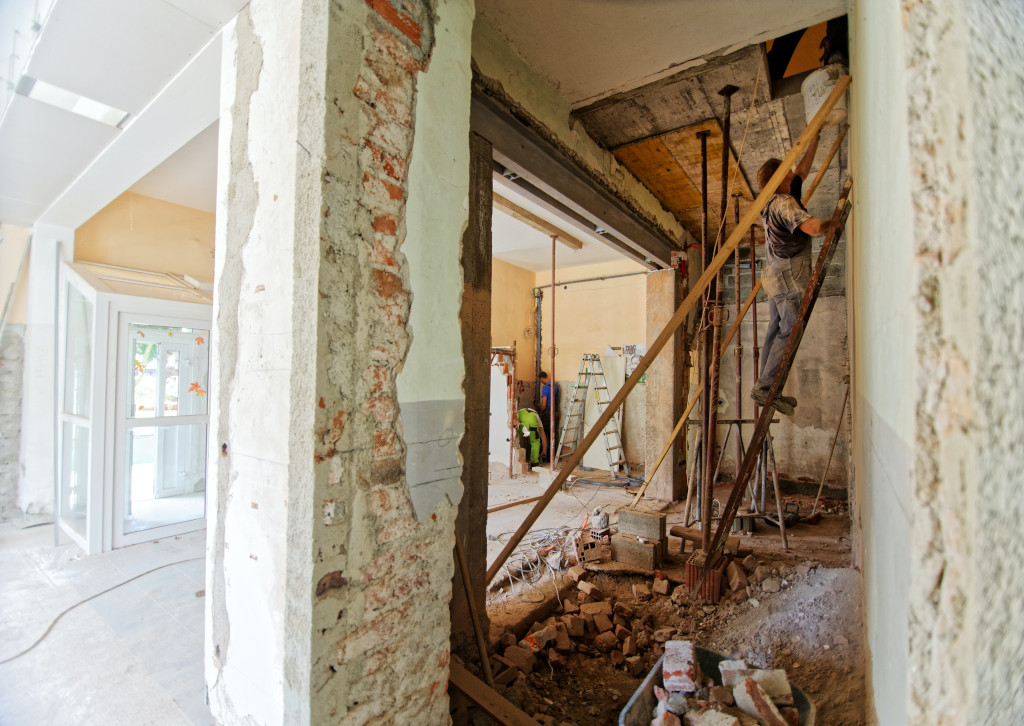
Simon Worthington, Leeds Teaching Hospitals NHS Trust Director of Finance and Senior Responsible Officer for the Hospitals of the Future Project, said: “We were unable to proceed with one of our tenderers but, in accordance with good procurement practice the right thing to do was to follow due process and this has resulted in the Perkins and Will team being appointed as the Trust’s Preferred Bidder to take forward this design opportunity.
“The competition process to appoint an architect was very strong with a number of international practices taking part which meant we received some exceptional concept designs. The Perkins and Will concept design is very exciting and will create a fantastic landmark for the hospital and the city of Leeds and we are delighted to be working with them to create the new hospitals.”
Perkins & Will Managing Principal, Mark Rowe, said: “It’s obviously a huge privilege to be entrusted with the design of such a prominent site in one of the country’s most important cities.

“Working closely with the Trust, we believe we can deliver an outstanding building that not only supports exemplary clinical care and treatment but that over time can become as cherished a part of the Leeds cityscape as George Gilbert Scott’s exemplary original hospital.”
The Trust is planning to start construction in 2023, enabling it to align with the Government’s New Hospital Programme and benefit from the collaborative approach of working at scale, allowing it to share its experience with other less developed schemes, in areas such as digital technology, sustainability and modern methods of construction.


Did you miss our previous article…
https://www.arizonasolarsociety.com/?p=662
£25m Cardiff coastal defence bid contest starts
Contractors are being invited to bid for a £25m coastal defence scheme to save large parts of Cardiff from floods.
Cardiff Council is planning to replace existing defences along the mouth of the Rhymney River, due to erosion and growing risks of flooding from climate change.
The plans include putting 100,000 tonnes of rock on the coastline, raising the riverbank behind and raising embankments next to a highway.
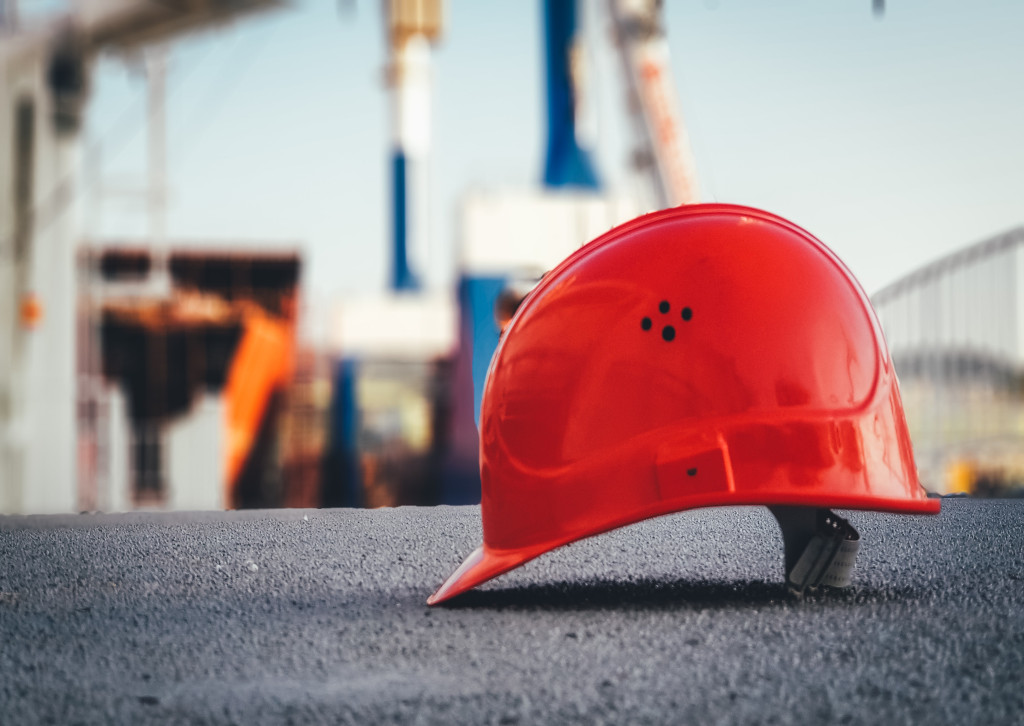

Government starts race for £30bn mega framework
The Crown Commercial Service has started the tender race for its ProCure23 and major project framework for public spending departments.
The fourth-generation ProCure23 element for the NHS will be split into three lots, while two other lots in the bundled tender will cover MoD airfield works and major construction projects valued at more than £80m.
The final major projects lot will account for the majority of total forecast spend over the 56-month lifetime of the frameworks at £20bn.
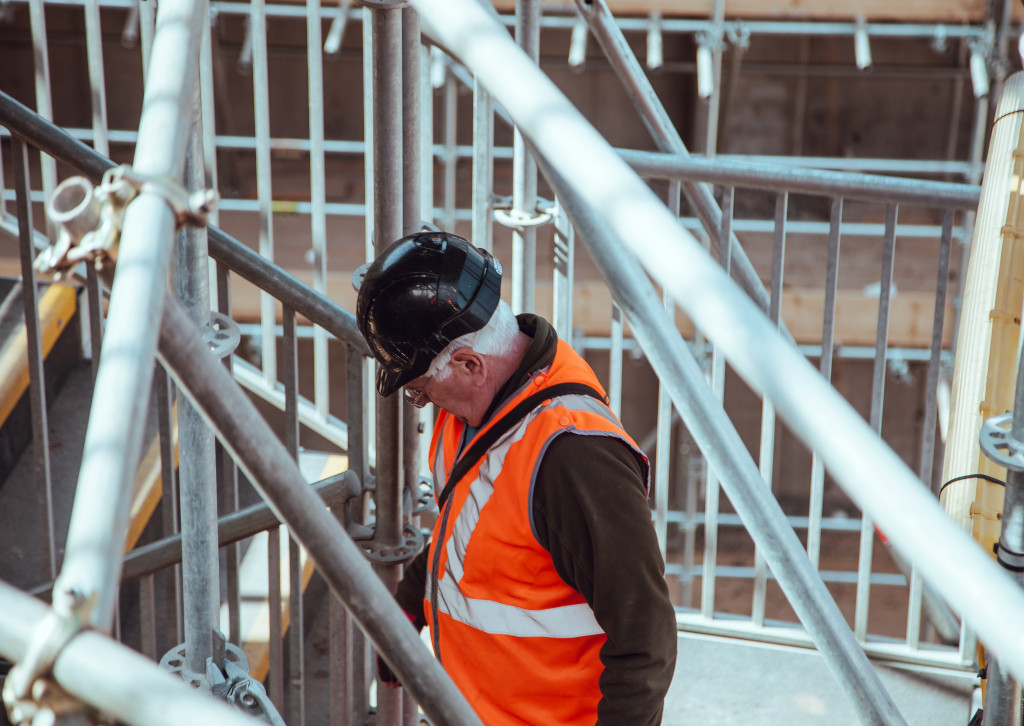
These last two lots are effectively a partial refresh and expansion of the Government’s Construction Works and Associated Services framework to provide extra market capacity and usher in principles in the Construction Playbook.
A webinar is planned for 4 October to launch the contest.
Framework lots
P23 value-based lots:
1. projects under £20m; split into seven regions (Value £3bn)
2. projects £20-£70; 8 places (£3bn)
3. projects over £70m+: 8 places (3bn)
Construction Works and Associated Services 2
4. Airfield Works – national lot; 6 places (£1bn)
5. General construction over £80m; 20 places (£20bn)

Building on past iterations, P23 is hoped to bring the latest best practice in construction methods to the NHS and focuses on delivering greener facilities, reducing carbon emissions and promoting social value.
The present P22 arrangement is shared by six firms: BAM, Galliford Try, Graham, Tilbury Douglas, Kier and Vinci/Sir Robert McAlpine joint venture IHP.
In its 19 year history, the ProCure framework has successfully delivered more than 1,200 projects across England, with a cumulative spend of £9.7bn, and ProCure23 will build this heritage into a third decade.
For more information click here.
Those interested in attending the webinar session please express your interest by emailing [email protected]


Did you miss our previous article…
https://www.arizonasolarsociety.com/?p=652
Six chase £240m HS2 phase 2a advanced works
HS2 has invited six firms to tender for a major two-part enabling works contract for the phase 2a route from the West Midlands to Crewe.
The three-year £240m contract splits work along the route into two separate packages with one contractor delivering the works on the northern sections and a separate contractor delivering works for the southern sections.
Given the similarity of scope for the north and south contracts, bidders must bid for both contracts but will not be able to win both packages for capacity and resilience reasons.
Shortlisted bidders
- BAM Construction
- Galliford Try
- Graham
- Kier
- Laing O’Rourke
- Skanska
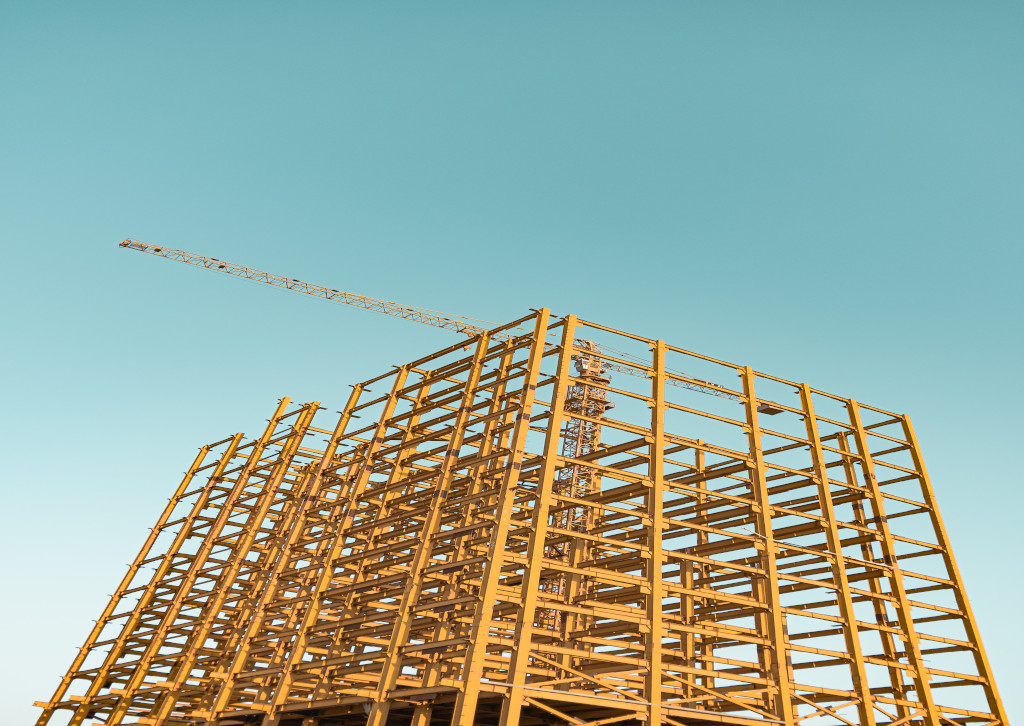
Activity will include land assembly; environmental mitigation; establishment of haul routes and site compounds and preparing the trace of the line – all of which will enable rapid mobilisation and the start of Main Civils Works in Summer 2024.
Advanced Civil Works is due to begin in Autumn 2022.

Today’s announcement follows HS2 beginning the search for the Phase 2a Design and Delivery Partner (DDP), when in June it published the PQQ for the £500m contract.
The winning bidder for the DDP package will work with HS2 to lead the delivery of the 36-mile route, including managing and co-ordinating key contracts for delivering the railway’s detailed design and construction, which includes 17 viaducts, 65 bridges and track along the route extending from Phase One in the Midlands to the southern outskirts of Crewe.
HS2 chief commercial officer, Ruth Todd, said: “Extending the Phase 2a route to Crewe will support 6,500 construction jobs and deliver new infrastructure that frees up capacity on the West Coast railway and shortens journey times together with an improved passenger experience.”


Did you miss our previous article…
https://www.arizonasolarsociety.com/?p=640
Over 350,000 Projects Turn to Autodesk Construction Cloud for Preconstruction Workflows
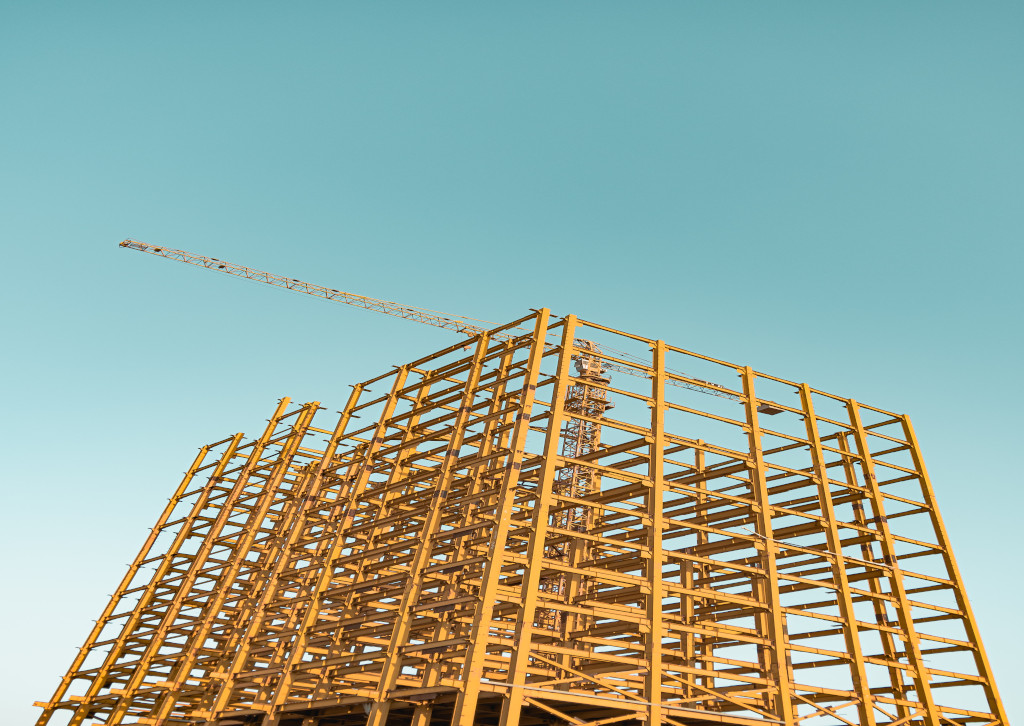
Autodesk releases new product enhancements for quantity takeoff and design review workflows to increase collaboration and mitigate risk during preconstruction
San Francisco, Calif. — September 23, 2021 – Autodesk, Inc. (NASDAQ: ADSK) today announced that more than 350,000 projects across the globe are using Autodesk Construction Cloud to power more effective preconstruction workflows, including document management, bid management, quantification, model coordination and design collaboration. The company also announced a series of product updates, doubling down on its commitment to unify the construction process and empower teams to build better.
Owners, general contractors and specialty contractors alike, across all industry segments around the world, turn to Autodesk Construction Cloud for their preconstruction workflows. DeAngelis Diamond, Windover Construction, Inc. and Granger Construction are three such companies using Autodesk Construction Cloud to supercharge workflows for bid leveling and risk mitigation, model conditioning, quantification, design collaboration, model coordination and more:
- DeAngelis Diamond – a national construction management firm specializing in commercial, multi-family and healthcare construction with offices across Florida, Tennessee, Alabama and Michigan.
- Granger Construction – a Michigan-based construction management firm specializing in education, commercial, industrial, healthcare and the public sector.
- Windover Construction, Inc – a full service, employee-owned firm that provides comprehensive preconstruction planning, estimating, design-build, virtual design and construction management service in the education, healthcare, commercial, senior living and hospitality spaces.
“Mistakes made in preconstruction become exponentially more expensive when they are discovered in the field,” said Zac Hays, head of preconstruction product at Autodesk Construction Solutions. “Autodesk Construction Cloud arms preconstruction teams with best-in-class solutions to help mitigate risk and reduce rework, whether it’s reducing the total number of RFIs, increasing collaboration between the design and planning phases or using machine learning and predictive insights during the bidding process within BuildingConnected.”
“Any contractor knows that risk mitigation during the preconstruction phase is one of the most critical factors to success, and a big part of that is bid leveling,” said Brett Diamond, CIO and principal at DeAngelis Diamond. “BuildingConnected not only gives us access to a robust network of specialty contractors, but also makes collaboration with our estimating team seamless and provides valuable insight into our historical bidding data. Combined with TradeTapp’s machine learning and AI technology to evaluate and mitigate risk, BuildingConnected allows us to reduce our rework, stay on time, on budget and be more nimble and efficient as an organization.”
Autodesk Construction Cloud is a cloud-based construction management solution that offers an end-to-end platform to manage every phase of the building lifecycle, from design and plan, to build and operate. For the design and plan phases of construction projects, Autodesk Construction Cloud supports:
- Bid management and qualification – bidding teams can access the largest real-time construction network with an easy-to-use platform that streamlines the bid and risk management process, while utilizing machine learning to help identify, quantify and provide risk mitigation insights.
- Design Collaboration — multi-disciplinary teams can update designs in the same place, at the same time. With controlled package sharing, team WIPs, issue identification and design change notifications, teams will always be up to date with the latest design content.
- Model coordination – designers, engineers, BIM experts and trades can easily contribute to model coordination using automatic clash detection, clash grouping and tolerances, an issues solution that connects tools like Navisworks and Revit to the cloud and an aggregated model that can be reviewed by discipline, relevant sections or a first-person walk through.
- Model conditioning – teams can easily add custom data to a given model and classify and organize project data, turning a design into a construction-ready model that can be easily broken down into relevant scopes for downstream activities.
- Quantity takeoff – estimating teams can perform 2D and 3D quantification workflows from a common data environment to increase collaboration, speed and accuracy during the estimation process.
- Document management – Autodesk Construction Cloud provides a common data environment that helps teams organize, distribute, and share files on a single, connected document management platform, ensuring all team members have access to the information they need.
New Takeoff API allows users to leverage quantities from Autodesk Takeoff externally
Autodesk Takeoff has released a beta API that allows estimating teams to leverage quantity takeoff data and project information directly from Autodesk Takeoff and integrate it into existing solutions. With this new API, teams can now extend the life of takeoff data to inform project decisions and power downstream workflows while breaking down barriers and providing added flexibility.
“Along with being able to visualize our takeoffs in both 2D and 3D, Autodesk Construction Cloud’s common data environment gives our team a big advantage when it comes to quantification,” said Amr Raafat, vice president of VDC and technology at Windover Construction. “Knowing that our team is working from the most up to date information, from a single source of truth, allows us to enhance our collaboration and deliver more accurate and complete quantity takeoffs.”
Autodesk BIM Collaborate adds functionality to better identify design and constructability issues
Autodesk BIM Collaborate, a solution that enables project teams to easily manage coordination and design review workflows from the cloud, has also announced new updates that will help teams be able to quickly identify and resolve design and constructability issues throughout the building lifecycle. These updates include:
- A new clash tolerance filter, which allows individuals on the project team to check their work using dynamic clash tolerance filters—making it easier to focus on larger clashes at first, while getting more detailed as you go.
- Issues in Design Collaboration for architects, engineers and BIM experts to identify 3D issues in the design phase—adding relevant issue details, assignments, comments and due dates to be resolved in Revit or passed on to the coordination phase. 2D issues are also available for digital markup of 2D sheets with shapes, text, measurements, photo references and issue pins during design review.
“Information siloes between general contractors and trades have historically been a massive challenge for those of us working in preconstruction,” said Darrah Leach, VDC Manager at Granger Construction. “Building a bridge between the two with collaborative features allows us to work not only cross functionally, but with partners outside of our own organization. This helps connect us in ways that simply were not possible before and, at the end of the day, helps us speed up our delivery time. Autodesk BIM Collaborate acts as that bridge between project partners and allows us to work in lockstep as broader team.”
Assemble now supports publishing directly from Autodesk Docs
In line with offering a model conditioning solution that allows BIM and VDC Managers to organize, customize and share model data with key stakeholders for downstream workflows, Assemble users can now publish Revit models directly from Autodesk Docs and BIM 360 Docs to Assemble without using Revit or any publisher add-ins. This greatly reduces duplication of efforts by leveraging the common data environment and helps ensure everyone is working from the latest project documents.
“As technology pushes the envelope of what’s possible in construction, preconstruction has truly become a secret weapon that allows teams to improve their margins, speed up delivery times, reduce risk and deliver projects with more precision,” said Jim Lynch, senior vice president and general manager, Autodesk Construction Solutions. “Autodesk Construction Cloud delivers a suite of preconstruction products that are bound together by a common data environment – making collaboration seamless and breaking down siloes that lead to costly mistakes and rework. We’re excited to be powering the future of preconstruction and look forward to continue delivering on our promise of building better, together.”
About Autodesk
Autodesk is changing how the world is designed and made. Our technology spans architecture, engineering, construction, product design, manufacturing, media and entertainment, empowering innovators everywhere to solve challenges big and small. From greener buildings to smarter products to more mesmerizing blockbusters, Autodesk software helps our customers to design and make a better world for all. For more information visit autodesk.com or follow @autodesk.
Media Contact
Paul Chalker
Autodesk
[email protected]
Autodesk, the Autodesk logo, Assemble, Autodesk Construction Cloud, BIM 360, BuildingConnected, Navisworks, Revit, TradeTapp are registered trademarks or trademarks of Autodesk, Inc., and/or its subsidiaries and/or affiliates in the USA and/or other countries. All other brand names, product names or trademarks belong to their respective holders. Autodesk reserves the right to alter product and services offerings, and specifications and pricing at any time without notice, and is not responsible for typographical or graphical errors that may appear in this document.
© 2021 Autodesk, Inc. All rights reserved.
The post Over 350,000 Projects Turn to Autodesk Construction Cloud for Preconstruction Workflows appeared first on Digital Builder.
Using Technology to Slash the Time It Takes to Deliver Accurate Takeoffs With Carroll Estimating
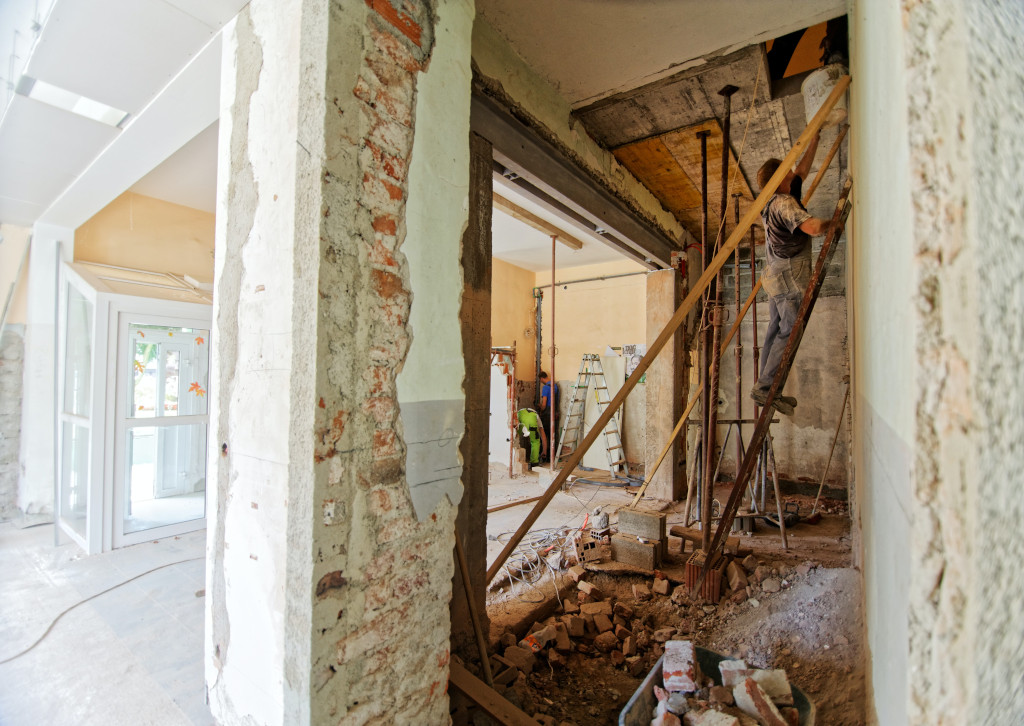
Carroll Estimating was established in 2019 to help and support main building contractors and developers better understand their tender and construction costs. Focusing on estimating services, the firm helps secure tenders and projects in a simple and effective way.
However, Carroll Estimating provides more than just an estimating service. The team combines over 40 years of experience and works in a collaborative partnership with clients and construction professionals alike to develop transparent and trusting relationships. With every tender, they provide affordable, professional, cost-effective, confidential and punctual estimating services from the smallest construction projects to large civil engineering projects across Ireland, the UK and Europe.
Delivering a competitive advantage to their clients is vital and additional estimated coded breakdowns are provided to ensure tenders are factually priced to the last nail. The team recognises the important role technology solutions play in providing accurate and speedy estimates, and the business has invested in sourcing the best estimating and procurement software to deliver results for their clients.
Technology playing a key role in company growth
Patrick Carroll, Director at Carroll Estimating, knows that the shortage of surveyors and estimators across Ireland means many major infrastructure and construction project professionals are time pressured when it comes to tendering and bidding.
“We work with main contractors in Ireland and we’re now expanding into the UK, but we really serve as an extension into their project team,” remarks Patrick. “We take the utmost pride in what we do because when our main contractors are successful, so are we.”
Ensuring that technology plays a vital role in their day-to-day operations is crucial for Patrick and the team, helping to deliver timely but accurate contributions on projects.
“We know that continually evolving and investing in the best technology solutions out there ensures we can provide the most accurate numbers in a timely manner to nurture our relationships. We thrive on repeat business and that comes with the quality of work we provide” reflects Patrick. The quality of work provided by Carroll Estimating is exemplified through their business growth.
Since starting out in 2018, Patrick has been able to grow the size and scale of projects the team work on through fostering their client and customer relationships as well as focusing on innovation. Patrick completed a Masters degree in construction informatics – a Building Information Modelling (BIM) course that provided him with solid knowledge around BIM theory and application as well as principles and practices of advanced construction technologies.
For Carroll Estimating, using BIM on projects and technology like a common data environment is essential for access to the most up-to-date project data and information. As an extension to the project team of the main contractors they serve, Carroll Estimating has experience using a variety of BIM platforms. In fact, Patrick insists this technology is used by all supply chain partners during construction tenders and bids to streamline communication between all stakeholders during the process.
Establishing better BIM practices and creating time savings
Leveraging BIM models for estimating is something Carroll Estimating prioritises on every project. They began a trial of Autodesk Takeoff, an Autodesk Construction Cloud solution, in early 2020 to explore options that would combine 2D and 3D quantification capabilities in one solution.
“We’ve been able to collaborate much more efficiently with our supply chain and main contractor partners as we’re all working from one single source of truth on our takeoffs, bids and tenders,” says Patrick. “We serve as an extension to the main contractor’s project teams, and can use the solution to communicate upfront with our design team colleagues on our needs later down the line.”
Using Autodesk Takeoff, Carroll Estimating can create competitive tenders by performing more accurate 2D takeoffs and generating automated quantities from 3D models. “Before using Autodesk Takeoff, we spent a lot more time on this process. As an example, on a particular project we needed to perform a takeoff for 400 doors, with over 20 door types, each type had a separate specification example some had timber or metal door frames. Previously, this activity may have taken a day to identify all of the doors on the model but now using Autodesk Takeoff, we can do this in less than a minute through the 3D model in the software,” says Patrick.
“The efficiencies for our team and our clients are what really stand out to us. Another example is the time it now takes to price structural floors – previously this may have taken half an hour and now we can do it in a matter of seconds.”
For Carroll Estimating, reducing the time spent on administrative tasks so the small team can concentrate on value-adding activities that support their clients’ needs is essential. Using Autodesk Takeoff has allowed them to do exactly this.
Patrick reflects: “Our contractors ask us to price jobs after doing measurements. When we’re working on big infrastructure or commercial projects, we could have up to 50-100 subcontractors working with our team. This means when we send out jobs for pricing, we would need to contact every single one four times as we generally get around four prices per trade. So already, we’re looking at potentially sending out pricing requests to 400 people!
“And when you add the number of email replies you may have to respond to, as well as chasing for quotes and so on, in a week you may have sent up to 1200 emails to complete that one task. Having everyone using one common data environment reduces these administrative tasks immensely – we use the clusters features in Autodesk Takeoff to break out floors, doors and windows to streamline this process and provide a visual representation.”
Staying competitive and growing their offering through technology
Not only does Carroll Estimating save time using Autodesk Takeoff’s features to generate accurate quantities needed for pricing, but the team is also able to verify and capture the most detailed quantities when it comes to bidding and tendering for future work.
As Carroll Estimating works with a number of model iterations on their projects, when drawings change, the team is alerted easily and quickly. They can then quickly verify how any changes affect their pricing using Autodesk Takeoff where previously these changes may have taken a number of days to update.
Collaborating with architects and designers on their projects in real-time in the model using Autodesk Takeoff means communication is more transparent and accurate. The project team can communicate clearly in the models on the needs for pricing and estimating work further down the line. This is vital as accuracy is key when it comes to bidding for work – the competition is fierce, and estimation needs to be spot on and competitive in the marketplace.
“For us as a team, working with more 3D models has opened up our marketplace. Previously, we were primarily doing jobs that had 2D drawings but now we’re able to work on more complex and bigger jobs as the solution improves our productivity,” says Patrick. “We’re also still able to takeoff more regardless of whether they are 2D or 3D models as we’re working from the same environment.” All of this means Carroll Estimating has the capacity to take on not only more work, but more varied work, ensuring that the team gets a diverse variety of projects to add to their portfolios.
Looking to the future, getting the most out of the features and functionality of Autodesk Takeoff is a priority for Carroll Estimating. The team continues to learn more about the capabilities as well as ensuring good BIM practices are established on projects.
Patrick remarks: “Good BIM practice not only saves time on projects but reduces the need for rework and the number of mistakes that can arise, as well as allowing remote collaboration. Our team isn’t required on site as much because we’re working in a more digital environment that is collaborative and transparent. Not only does this improve productivity but safety is also supported too.”
For Patrick, the value of working digitally using BIM is something every construction project should be doing and is the future direction the industry needs to take.
The post Using Technology to Slash the Time It Takes to Deliver Accurate Takeoffs With Carroll Estimating appeared first on Digital Builder.
Keep Projects on Track with the New Schedule Tool in Autodesk Build
Project delays in construction happen quite frequently, and typically result from poor planning. With such long time-tables, it’s difficult to plan for unforeseen schedule disruptions while managing the many moving parts of a project. Arguably the toughest part of a project manager’s job is managing the impact of those schedule disruptions across several teams working on the same project.
Looking closer, schedules are typically managed on a whiteboard in the trailer or by coordinators in the office. As a Project Manager or Schedule Coordinator, it’s often frustrating if you lack the tools to quickly relay the most current schedule information to your teams. From milestones, dependencies, and tasks, keeping teams up-to-date is crucial to avoid potential delays and costly rework. In fact, research from Dodge Data & Analytics shows that 66% of general contractors are carrying added costs from overtime shifts on at least three quarters of their projects due to schedule slippage, with 50% of them needing to extend the project end date.
Today, we are excited to announce the new Schedule Tool available in Autodesk Build. The Schedule Tool enables teams to collaborate, connect, and integrate with the most up-to-date schedule. Schedules uploaded from traditional CPM software can be imported to the Autodesk Build project, delivering real-time access to master schedule data in the field to ensure that everyone is on the same page at the same time. Let’s explore four capabilities in the new Schedule Tool that help you keep projects on track.
Key features of new Schedule Tool
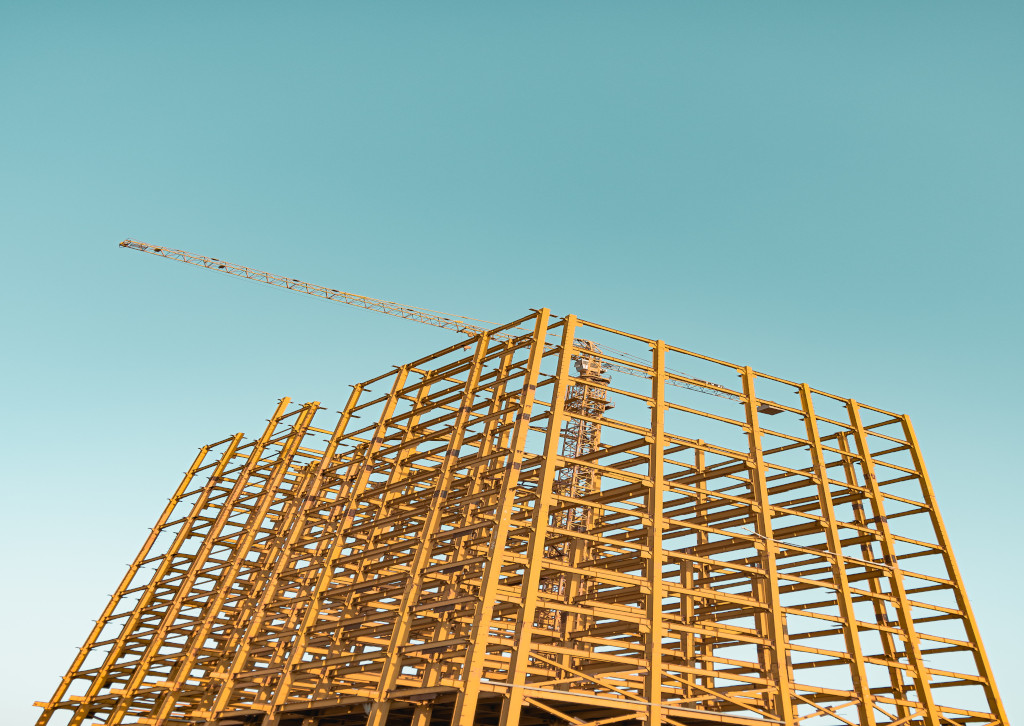
1. Schedule surfacing
Upload schedule data from CPM software such as Primavera P6, ASTA PowerProject, or Microsoft Project into Autodesk Build. Teams can instantly access the project schedule and comment on specific activities to update teams or suggest changes back to HQ.
2. Filter by relevant items only
Schedules can be thousands of activities long and not all users need to see everything. Leverage the Schedule Tool’s search options to find exactly what you’re looking for, when you need it. Set filters to create custom views to display only relevant items. Look three weeks ahead or behind the current schedule, and view items on a Gantt chart.
3. Connect references to schedule
Teams can seamlessly link references—Submittals, RFIs, Sheets, Assets, and more—to the activity Item, providing the necessary context between the two.
4. Connecting schedule & cost
With the Schedule and Cost Management integration, teams can import schedule data into Cost Management to connect cost to time, as well as more accurately forecast cash flow. This is done by linking budget line items to schedule activities. Teams can then use built-in forecast distribution curves to visualize cost spending based on the timeline. And when all budget line items are forecasted, teams can access a project-level cash flow analysis for better planning, insight, and risk mitigation. This allows teams to achieve their project margins.
See more of the Schedule Tool in action
By creating a centralized schedule ecosystem for all project team members to refer to, comment on, and share out during the project lifecycle, the Schedule Tool in Autodesk Build connects projects, teams, and businesses and sets them up for success.
If you’re interested in the Schedule tool or Autodesk Build in general, request a product demo.
What customers are saying
“The Schedule Tool in Autodesk Build is easy to use and has reduced the amount of time I spend on distributing the schedule to our teams. Before Autodesk Build, I had to update the schedule, publish it as a PDF, and email the PDF to the entire team. Now, the process is automated. I upload my Microsoft project schedule into Autodesk Build, and it distributes a link to a web-based version of the schedule to the team, with notifications about the changes.” —Bryan Nuckolls, Project Manager at BOLDT
“One thing that’s cool about the Scheduling Tool in Autodesk Build is the ability to link different references together to understand how Issues or RFIs are impacting the schedule. This capability allows us to have more context into what items may affect the schedule and have more meaningful conversations with our subcontractors and owners for faster issue resolution.” –Brian Popis, VDC Engineer at Barton Malow
More Product Updates Across Autodesk Construction Cloud
This month, we announced over 35 new product updates across Autodesk Construction Cloud. Learn more about all of our product releases in our blog. For the latest updates specific to Autodesk Build, you can check out this blog post.
The post Keep Projects on Track with the New Schedule Tool in Autodesk Build appeared first on Digital Builder.